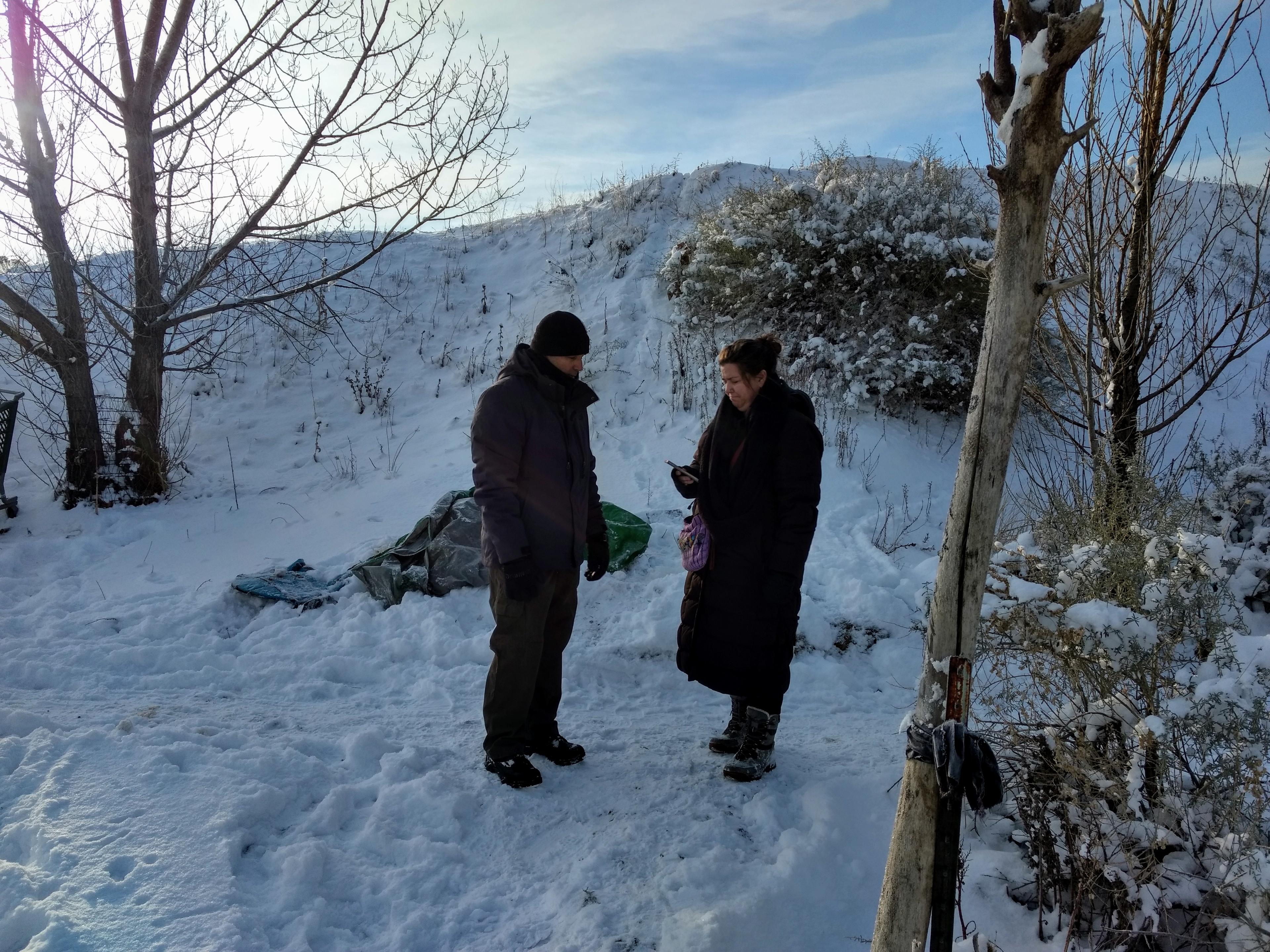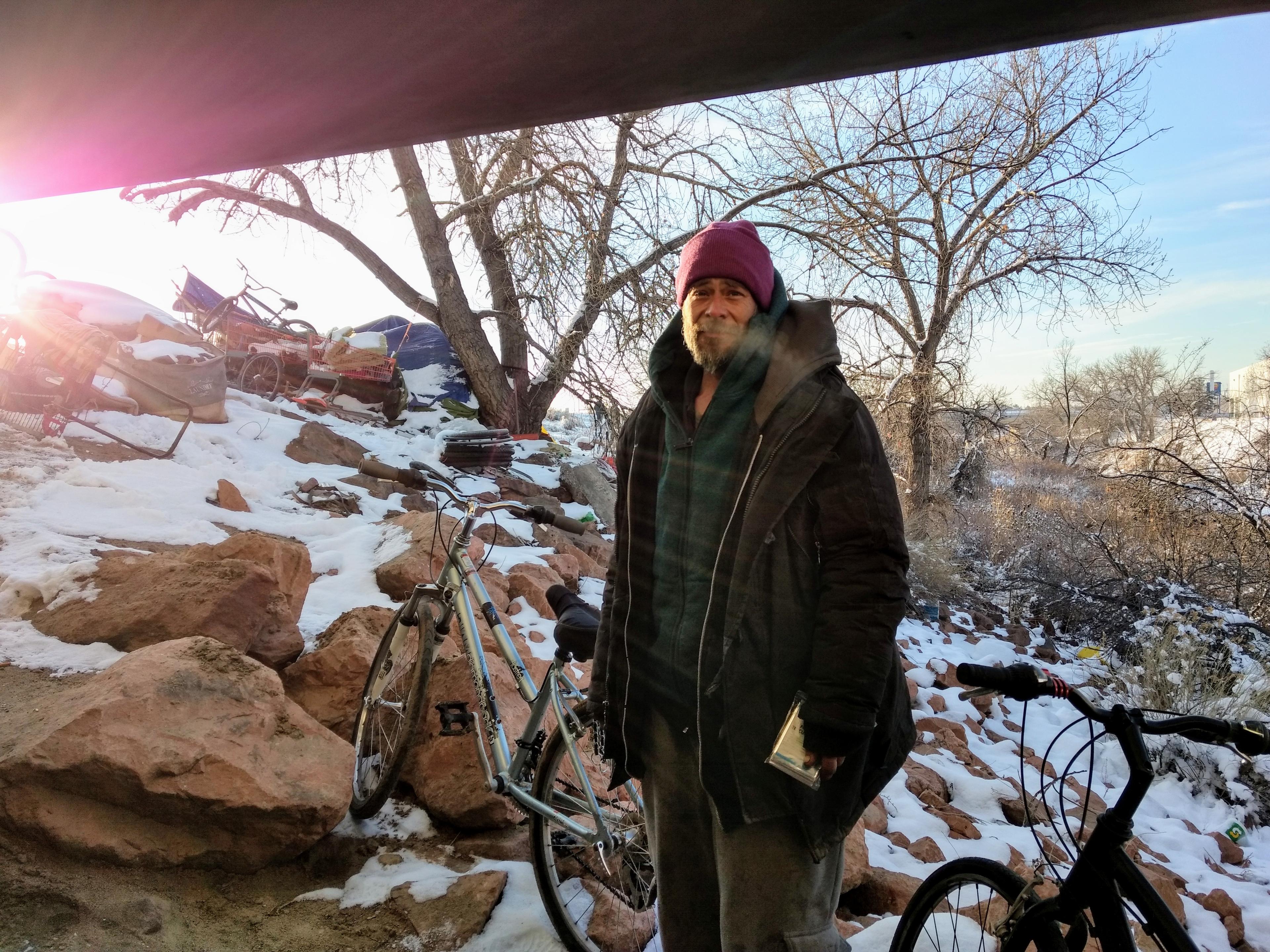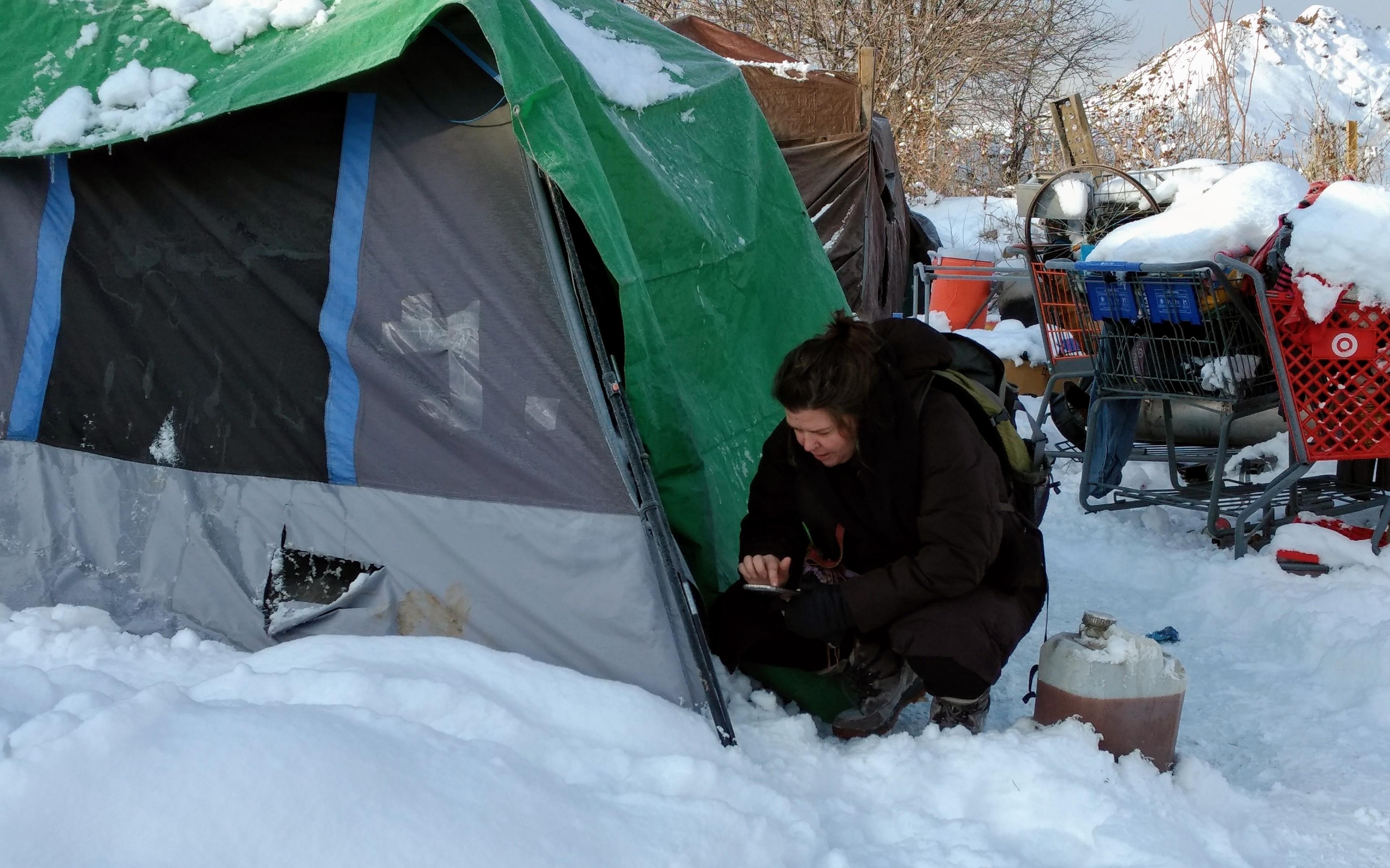It takes connections and intel to count the most difficult to find among people experiencing homelessness.
Housing advocate Megan Vizina was lucky to have Kirk Dominic, who as emergency manager for Commerce City has been keeping track of encampments in Adams County.
"Megan, today you're going to see all our spots," Dominic said Tuesday morning as he led Vizina down a snowy trail along Sand Creek.
Vizina, who is executive director of Commerce City's ACCESS Housing family support program, was one of scores of volunteers and local government and nonprofit staff canvassing metro Denver for the annual Point-in-Time survey, a 24-hour effort that started at sunset Monday.

Cities and towns across the country that want federal money to help people experiencing homelessness are required by the U.S. Department of Housing and Urban Development to count everyone in shelters and transitional housing each year at the end of January. HUD requires a census of people experiencing homelessness who are not in shelters every other year, though most communities also do that annually.
It's not just federal funds that ride on the Point-in-Time. Plans for adding shelter beds or mental health and other services are based on trends the counts indicate. Policy makers depend on it to shape conversations with communities.
"The Point-in-Time has such importance that you want to count as many people as you can," Vizina said.
Adams and other counties around Denver have been stepping up their efforts to quantify a problem many associate only with big cities, said Diane Howald, regional Point-in-Time coordinator for the Metro Denver Homeless Initiative. Howald's nonprofit guides the effort in the Denver region.
In 2017, one person was counted living in homelessness in Westminster, said Kate Skarbek, analyst of special projects for Westminster's Department of Parks Recreation and Libraries. But people in Westminster, which is in both Adams and Jefferson counties, knew they had a bigger homelessness problem, she said. Staff in Skarbek's department see people camping in the parks. And libraries "are our day shelters," Skarbek said ruefully.
Westminster last year held the first of what are called magnet events, at which food, clothing and services are offered to draw people living in homelessness in hopes some will be willing to be surveyed for Point-in-Time.
"It's a good first step," Skarbek said. "We've got more to do. There's a willingness to do it."
After a housing needs assessment was completed in 2017, Adams County officials set a goal of providing more affordable rental housing and other essential services to residents who are extremely cost-burdened. Last week a grand opening was held at the Baker School Apartments, a 142-unit affordable housing complex in unincorporated Adams County.
Skarbek oversaw a magnet event last year at Westminster's Swim & Fitness Center near the Irving Street Library. It drew 30 people. This year, a snowstorm made it less likely people would venture out, even for the meals, showers, flu shots, haircuts and other enticements at the fitness center. Still, 12 people experiencing homelessness were surveyed during the three-hour event Monday evening. Flyers about the magnet were distributed at libraries and other places where people living in homelessness congregate.

Among them was 31-year-old Lamar Rascoe, who paused in silent prayer before digging into a plate of chicken marsala and pasta prepared by The Gourmet Kitchen, a Broomfield caterer that was among the companies who supported the magnet event. Rascoe later sat with a canvasser with a computer who keyed in answers to Point-in-Time questions: How long had Rascoe, who spends his nights on the pavement outside a Westminster grocery store, been without housing? Was he a military veteran? Does he have concerns about mental health or substance use?
Rascoe said he'd applied for a job at Walmart earlier in the day and hoped to find a home soon after about three years of living on the streets.
"I'm going to do whatever I can not to stay in this situation," he said. "I'm not a street person. I'm a house person."
Toward the end of the evening, a Westminster city employee watched a young woman stuff a pink blanket into a carry-on size roller bag, both items donated for the event. The city worker took off her own snow boots and gave them to the woman, who was wearing tennis shoes.
"I saw those tennis shoes. And it's sopping wet out there. I have another pair of boots at home. How could I not do it?" said the city worker, who had a pair of running shoes to change into for the rest of the night.
The city worker refused to give her name: "I don't need any credit."
Howald, of the Metro Denver Homeless Initiative, said Point-in-Time is about such connections as well as about counting.
In Commerce City, Emergency Manager Dominic has been making connections to people in homelessness. It became part of his duties about two years ago when an encampment along the South Platte came to the attention of city leaders. The trash surrounding the camp was a health hazard, and with spring coming there was concern about flooding, making it an emergency management issue, Dominic said.
"I'm kind of the point man for our city dealing with a lot of homeless issues, dealing with encampments," said Dominic, who has come to know more encampments and tried to persuade inhabitants to seek services.
Tuesday, he and Vizina started their Point-in-Time surveys a bit late because it was so cold the ATV they'd planned to travel in wouldn't start. They set out in a police car, their first stop under a bridge over Sand Creek near a Sapp Brothers truck stop.



Tools and bike parts were neatly arranged amid a jumble of bags, tarps, even a stroller. Shannon Knypsi emerged from a tent. He said he reclaimed bicycles from dumpsters and repaired and sold them. He said he had come to Denver from Wisconsin for a change of scene and ended up homeless a few months ago. He found the Colorado winter relatively mild, and said he planned to return to Wisconsin once the weather there improved.
"Thanks for thinking of us," he told Vizina after she finished questioning him.
Vizina turned the survey into an opportunity to offer support, distributing bus passes, emergency blankets, socks, toiletries, peanut butter and jelly sandwiches and other supplies.
"Do you want some hand warmers?" she would call out by way of greeting as she approached tents and shacks.
Vizina was homeless for a time growing up in Denver. She went on to work with young people experiencing homelessness in New York before returning to her home town to earn a master's in social work from the University of Denver.
In April Vizina began working at ACCESS, which has eight two-bedroom apartments for emergency shelter for families. She and the leaders of three other shelters in Adams County recently began meeting regularly to share expertise.
"I think we could really do some awesome work," she said. "I feel like there's synergy in this county for some really exciting work and some movement."













